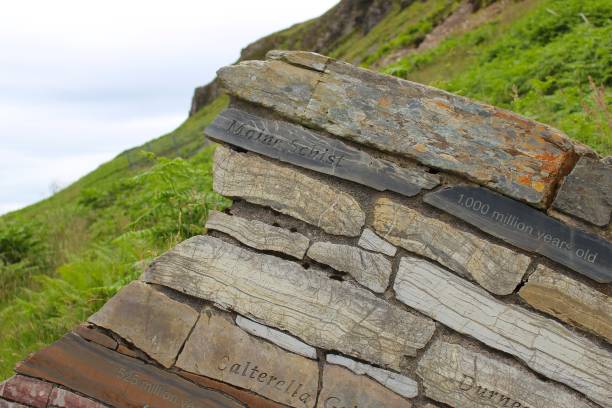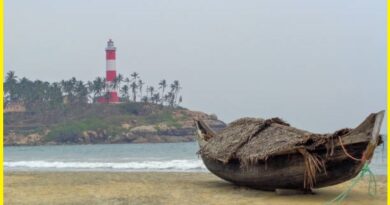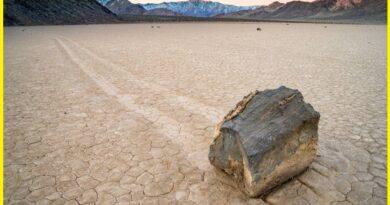Knockan Crag-Unraveling Scotland’s Geological Mysteries
Knockan Crag Scotland
Knockan Crag is a significant geological site located in the Scottish Highlands, specifically in the Assynt region of Sutherland, Scotland. It holds great importance in the field of geology due to its unique rock formations and the discoveries made there. One of the most prominent geological features at Knockan Crag is a thrust fault known as the Moine Thrust. It was first identified and studied by renowned geologist Sir Roderick Murchison and his assistant Sir Benjamin Peach in the 19th century. This thrust fault plays a crucial role in understanding the geology of the Northwest Highlands.
The site provides excellent rock exposures that display the interaction of different rock layers and their relationships due to tectonic forces. The rocks at Knockan Crag showcase the complex geological history of the region and how they were pushed and folded during tectonic events.
To help visitors understand the geological significance of Knockan, there is a Visitor Centre on site. The center provides interpretative information, exhibits, and interactive displays to explain the geological processes that have shaped the area. Due to its scientific and educational value, Knockan Crag has been designated as a National Nature Reserve to protect its unique geological features and the surrounding natural environment.

Geology of Knockan Crag
The geology of Knockan Crag is of immense scientific significance and has played a pivotal role in shaping our understanding of tectonics and geological processes. Located in the Assynt region of Sutherland, Scotland, Knockan Crag showcases some of the most critical geological features in the Northwest Highlands of Scotland. Here are the key geological aspects of Knockan areas are-
Moine Thrust
The most famous geological feature of Knockan Crag is the Moine Thrust. This thrust fault is a significant tectonic boundary that has thrust older rocks over younger rocks. The Moine Thrust is a classic example of a low-angle thrust fault and was instrumental in the development of modern structural geology.
Thrust Zones
Knockan Crag provides a clear exposure of thrust zones, which are areas where rocks have been shifted horizontally due to tectonic forces. These thrust zones are essential for understanding the complex geological history of the area.
Lewisian Gneiss
The rocks exposed at Knockan Crag are primarily part of the Lewisian Gneiss complex, some of the oldest rocks in Europe. The Lewisian Gneiss dates back over 3 billion years and provides valuable insights into the early geological history of the Earth.
Sedimentary Rocks
Adjacent to the Moine Thrust, you can find sedimentary rocks, such as sandstone and limestone, that were originally deposited in shallow seas. These rocks offer clues about past environments and the geological processes that occurred.
Geological Unconformities
Knockan Crag also showcases geological unconformities, which are gaps in the geological record resulting from periods of erosion or non-deposition. These unconformities provide valuable information about the long and complex geological history of the region.

Glacial Landforms
The landscape around Knockan exhibits glacial landforms, evidence of past glaciations that have shaped the region.
Knockan Crag’s geology has attracted the attention of geologists and researchers for centuries. It was here that the pioneering geologists’ Sir Roderick Murchison and Sir Benjamin Peach made significant discoveries about thrust faults and the Moine Thrust, contributing to the development of modern geological understanding. As a National Nature Reserve, Knockan Crag is protected to preserve its geological heritage and provide educational opportunities for geologists, students, and nature enthusiasts to study and appreciate its unique geological features.
Also, read- The Lewisian Gneiss- One of the Oldest Gneiss rocks in Scotland
Knockan Crag National Nature Reserve
Knockan Crag National Nature Reserve is a protected area in the Scottish Highlands. It is a site of significant geological and natural importance and has been designated as a National Nature Reserve to preserve and showcase its unique features.
The reserve is renowned for its exceptional geological features, especially the Moine Thrust, a significant tectonic fault. The Moine Thrust is a remarkable example of a geological phenomenon where rocks of different ages and origins have been thrust over younger rocks. The reserve features well-marked interpretative trails that guide visitors through the geological wonders of Knockan. The trails offer informative signage explaining the geological processes and the rocks on display.
Apart from its geological significance, the reserve is also known for its stunning natural beauty. The rugged landscapes, rolling hills, and open moorland create a picturesque setting for visitors to explore. The main focus of the National Nature Reserve is to protect and conserve the unique geological features and the surrounding natural environment. Conservation efforts aim to preserve the diverse flora and fauna found in the area.
Knockan Crag Stone Sculpture
Knockan Crag Stone Sculpture is a significant landmark and art installation located at Knockan Crag National Nature Reserve. It was created by the Scottish sculptor, artist, and poet, William MacKinnon, and was unveiled in 1986. The sculpture was commissioned to celebrate the geological significance of the area and to commemorate the work of geologists Sir Roderick Murchison and Sir Benjamin Peach, who made groundbreaking discoveries about the Moine Thrust at Knockan.
The sculpture is an abstract representation of the Moine Thrust and the geological processes that shaped the landscape. It consists of large, carved stones representing the different rock layers that were involved in the thrusting event. The sculpture’s design aims to convey the dynamic and powerful forces of nature that led to the formation of the Moine Thrust. It serves as a symbol of the geological significance of Knockan and its contribution to the understanding of tectonics.

Knockan Crag Trail
The Knockan Crag Trail is a well-marked and interpretative walking trail located within the Knockan Crag National Nature Reserve. The trail allows visitors to explore the unique geological features of the area and learn about its scientific significance through informative signage and exhibits. It offers an opportunity to experience the rugged beauty of the Scottish Highlands while gaining insights into the geological processes that shaped the landscape.
The trail is relatively short and suitable for all levels of hikers. It typically takes around 1 to 2 hours to complete, depending on the pace and stops along the way. The trail is lined with informative interpretative panels that provide details about the geological history of Knockan Crag, the Moine Thrust, and the rocks exposed in the area. The signage explains the complex geological processes that have shaped the landscape over millions of years.
Knockan Crag Hike
The Knockan Crag hike is a rewarding and educational outdoor experience that allows visitors to explore the geological wonders of the Knockan Crag National Nature Reserve. The hike takes you through the rugged landscapes and exposes you to the unique geological features of the area, including the famous Moine Thrust.
The hike can vary in length and difficulty depending on the specific route you choose to take. There are several trails and loops available, ranging from short, easy walks to longer and more challenging hikes. The main Knockan Trail is relatively short and suitable for most hikers, while other options may involve more elevation gain and rugged terrain.
Throughout the hike, you will encounter interpretative panels and informative signage that explain the geological history of the region. The hike offers stunning panoramic views of the surrounding landscapes, including the Assynt hills and the rugged beauty of the Scottish Highlands.
How to Reach Knockan Crag
The Knockan Crag is easily accessible by road, and here are the common methods of transportation to reach Knockan Crag. If you have your own vehicle, driving to Knockan Crag is the most convenient option. The reserve is situated along the A837 road, which connects the villages of Elphin and Unapool.

While there are no direct public transport services to Knockan, you can take a bus or train to nearby towns such as Ullapool, Lochinver, or Inverness. From these towns, you can hire a taxi or join a guided tour that includes transportation to Knockan.
Several tour operators offer guided tours to Knockan Crag. These tours often include transportation from nearby towns, knowledgeable guides who provide insights into the geology and history of the area, and visits to other scenic spots in the region.
Before you travel to Crag, it’s a good idea to check the current road conditions, available transportation options, and the operating hours of the Visitor Centre.



